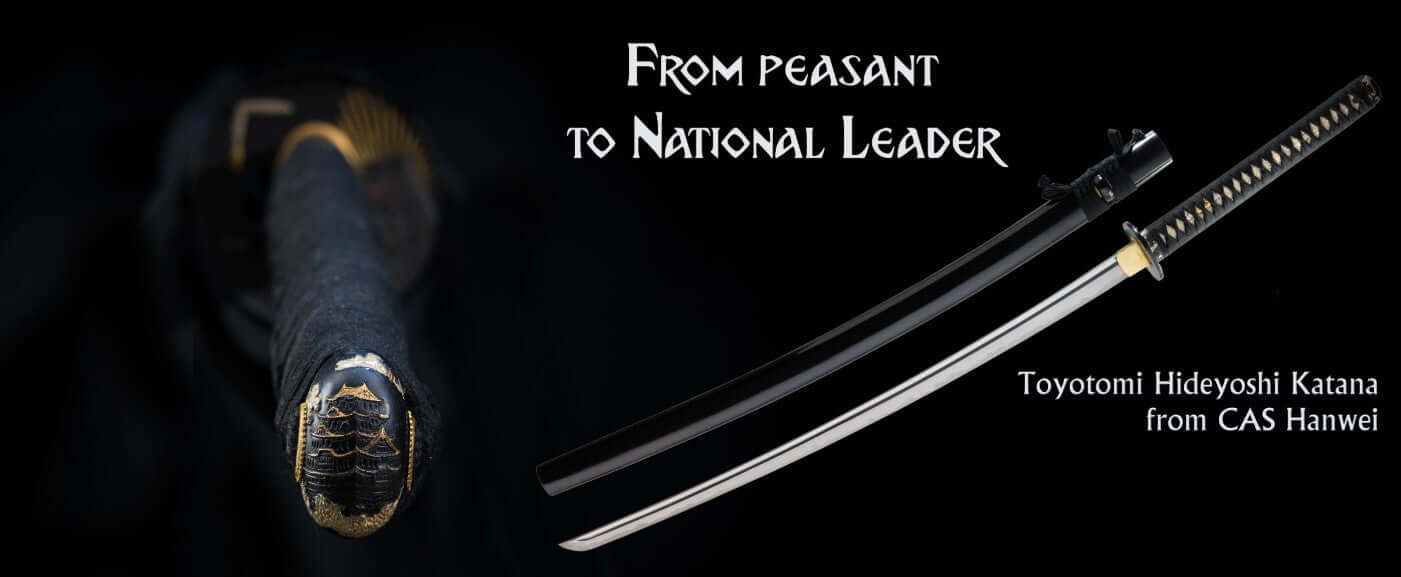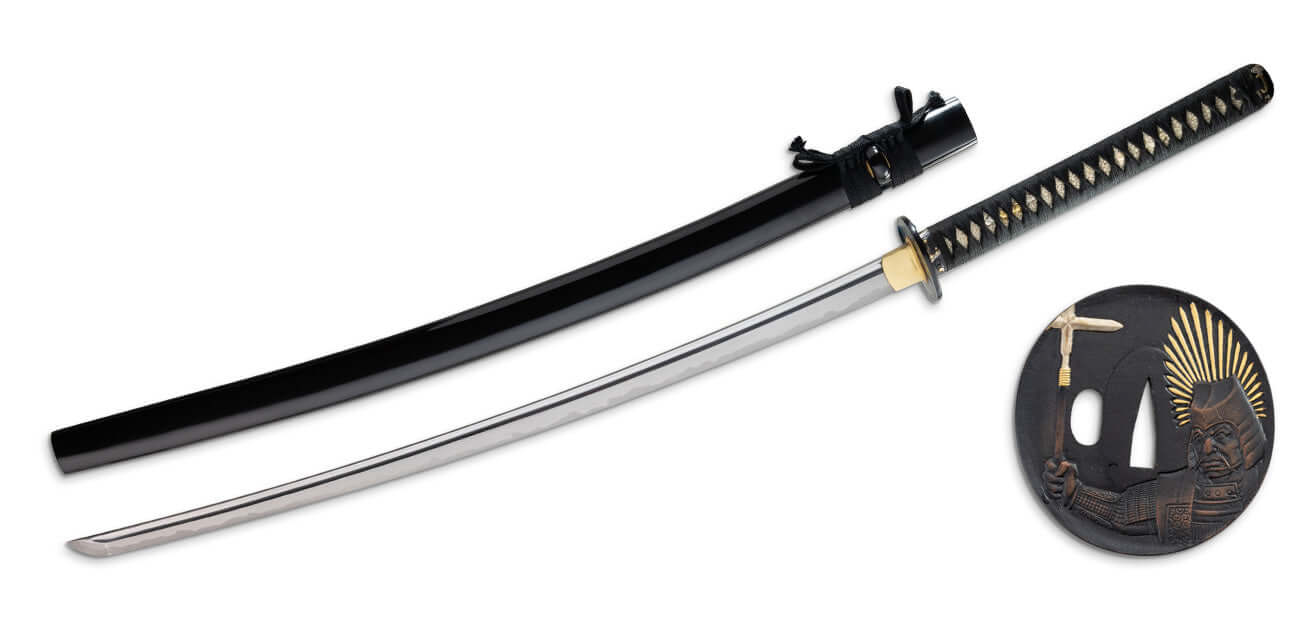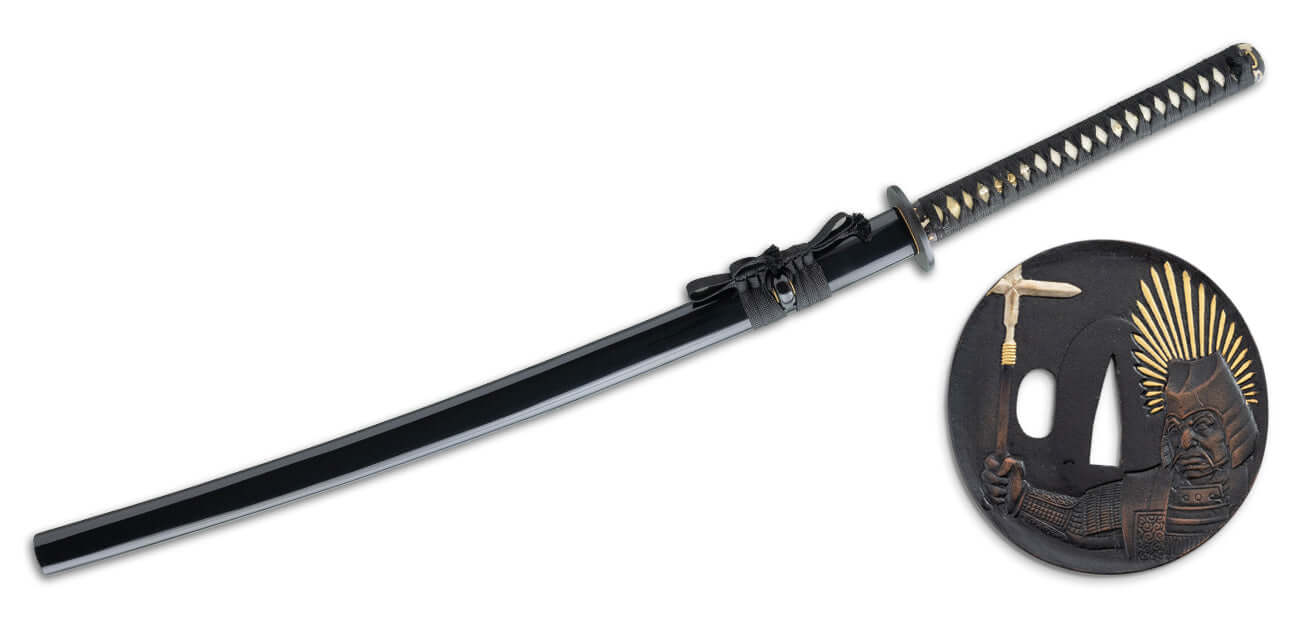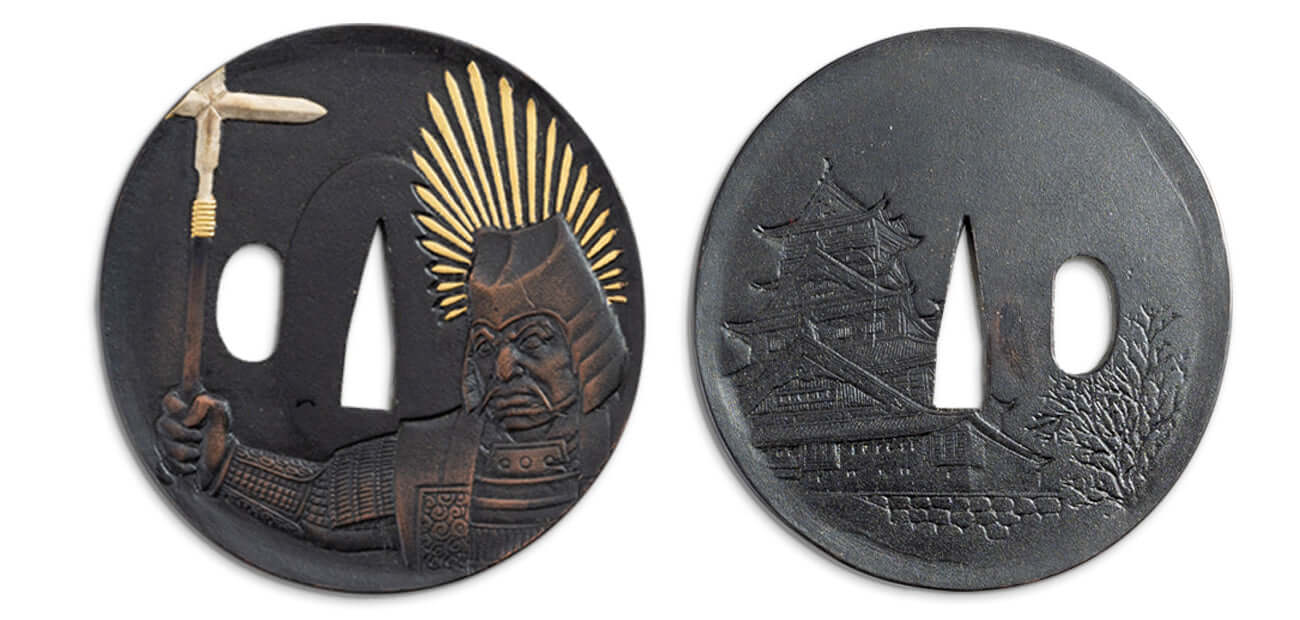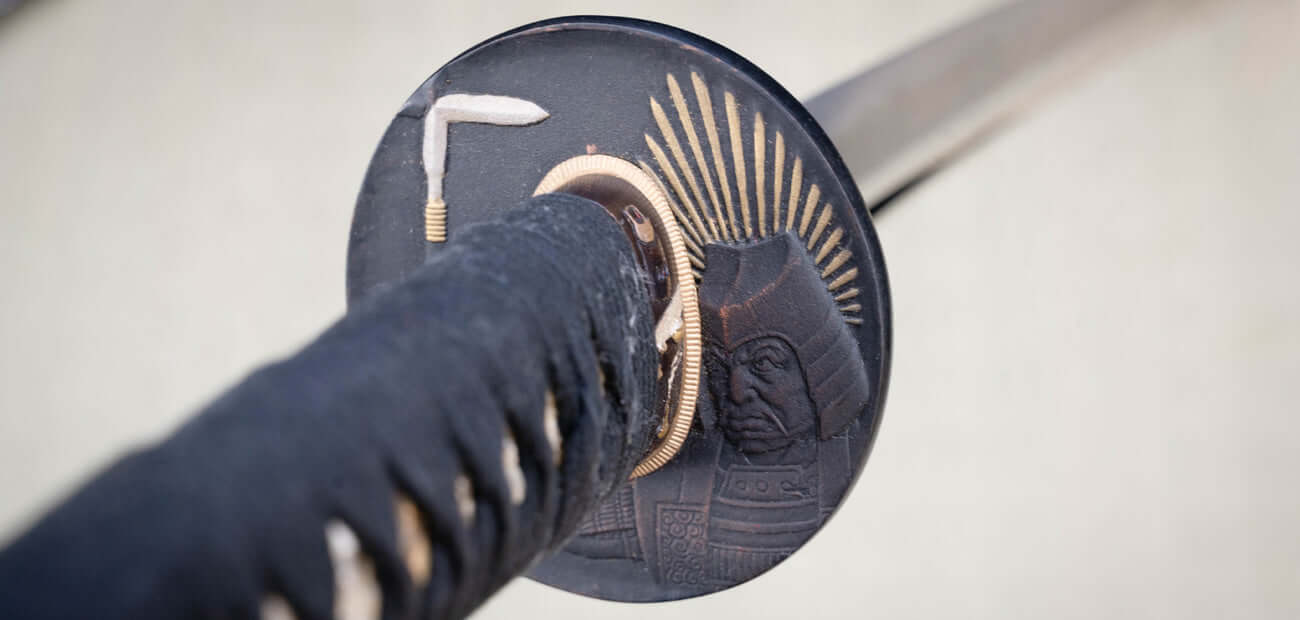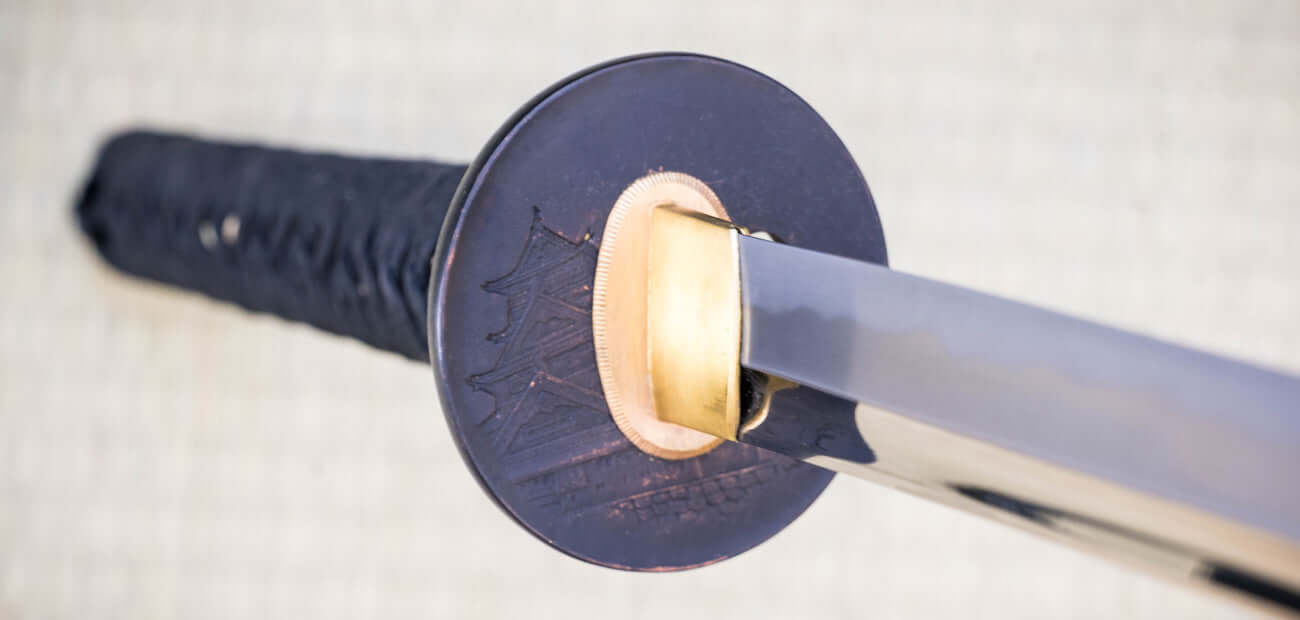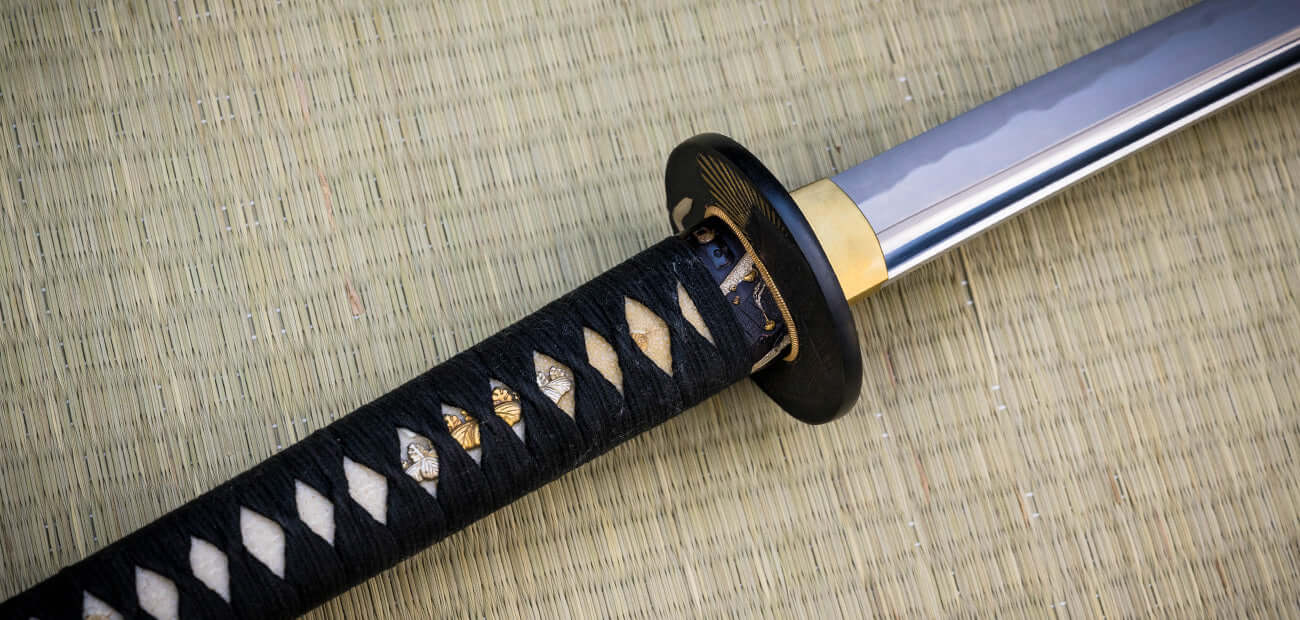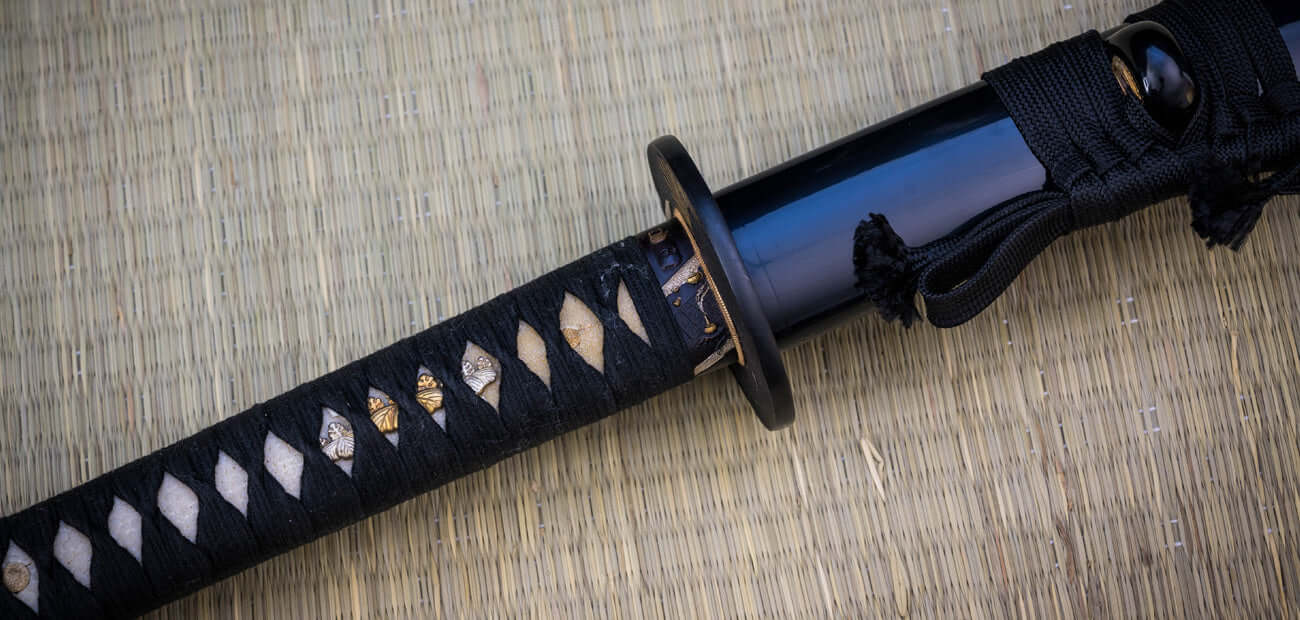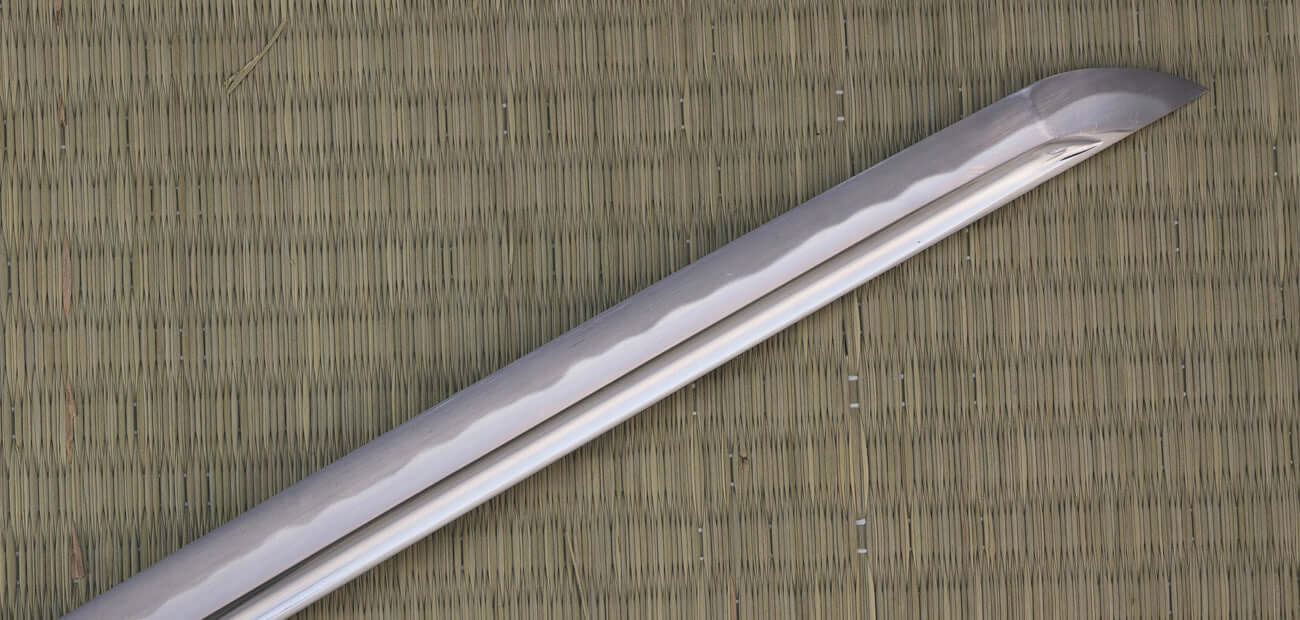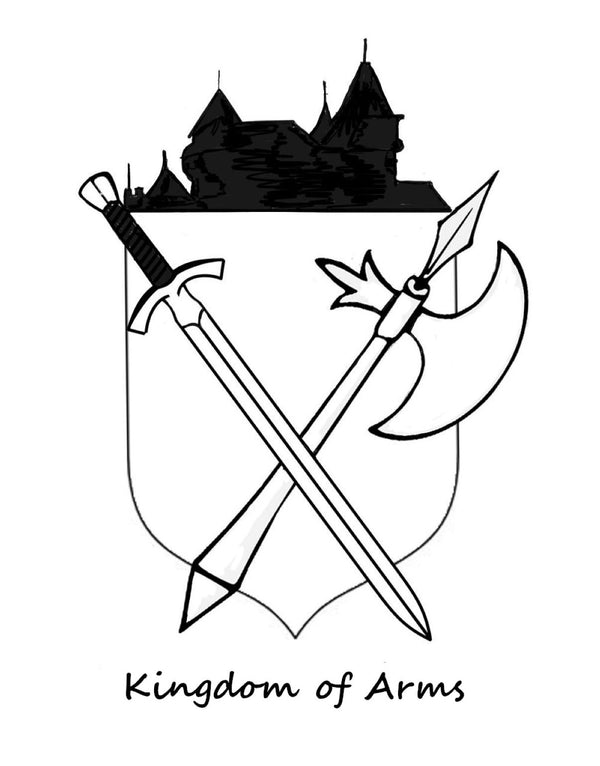Toyotomi Hideyoshi Katana by Paul Chen / Hanwei
Toyotomi Hideyoshi Katana by Paul Chen / Hanwei
Couldn't load pickup availability
Description
Description
Toyotomi Hideyoshi Katana – A Masterpiece of Japanese Sword Art
Toyotomi Hideyoshi, born Hiyoshimaru in 1536, rose from peasant origins to become the chief minister of the emperor in 1585. He sought to fulfill the unification of Japan left unfinished by his fallen leader, Oda Nobunaga. Hideyoshi played a pivotal role in many battles, including those in central Japan during Nobunaga's siege. His intelligence, tact, and positive demeanor helped him ascend through the ranks, and despite his humble beginnings, Hideyoshi implemented crucial reforms to the feudal system of Japan.
Hideyoshi’s reputation grew, and in 1577, Nobunaga tasked him with subjugating western Japan. Following Nobunaga's betrayal and death at the hands of Akechi Mitsuhide, Hideyoshi avenged his leader by defeating Mitsuhide at the Battle of Yamazaki. He further solidified his power by securing the line of succession for Nobunaga’s grandson. Hideyoshi then worked on fortifying Japan, constructing the iconic Osaka Castle, and began the unification of Japan, carrying on Nobunaga's legacy.
After a tense conflict with Tokugawa Ieyasu, Hideyoshi and Ieyasu formed an alliance, which led to Hideyoshi’s appointment as kampuku (chancellor to the emperor) in 1585. As Toyotomi Hideyoshi, he initiated reforms such as disarming the population, reducing the number of castles, freezing the social classes, and encouraging trade and travel by abolishing road checkpoints. He also conducted land surveys to develop Japan’s resources and establish a national coinage system, boosting the economy.
Despite his setbacks, including failed invasions of Korea in 1592 and 1597, Hideyoshi’s influence persisted. After his death in 1598, Ieyasu rose to power and established the Tokugawa Shogunate, continuing Hideyoshi’s unification policies and ushering in the peaceful Tokugawa era.
The Toyotomi Hideyoshi Katana
Hanwei has crafted a true work of sword art with the Toyotomi Hideyoshi Katana. This katana reflects Hideyoshi's legacy, with its tsuba depicting an image of Hideyoshi, embossed with gold detailing. On the opposite side, an etching of Osaka Castle pays homage to his strategic stronghold. The fuchi features gold detailing representing the tea ceremony, while the kashira showcases Osaka Castle. The handle is wrapped in black cotton over white same (ray skin), offering both durability and aesthetic appeal.
The 27” forged blade is designed with a hi (groove) on both sides, making the katana lightweight and quick for handling. The deep black lacquered saya (scabbard) completes the piece, making this katana ideal for both practitioners and collectors. The Toyotomi Hideyoshi Katana embodies the finest craftsmanship by Hanwei, making it a standout addition to any collection.
Please note: The katana’s sageo (cord) on the saya (scabbard) may not be wrapped as pictured.
Key Features:
- 27" Forged Steel Blade
- Embossed tsuba, kashira, and fuchi with gold detailing
- Deep black lacquered saya
Specifications:
- Overall Length: 40 1/4"
- Blade Length: 27"
- Handle Length: 12"
- Weight: 2 lbs 5 oz
- Thickness at Guard: 3/8"
- Thickness at Tip: 1/4"
- Sori (Curvature): 7/8"
- Blade Steel: T10
- HRC Edge: 60
- HRC Back: 40
Specs will vary slightly from piece to piece.
Toyotomi Hideyoshi Katana – A Masterpiece of Japanese Sword Art
Toyotomi Hideyoshi, born Hiyoshimaru in 1536, rose from peasant origins to become the chief minister of the emperor in 1585. He sought to fulfill the unification of Japan left unfinished by his fallen leader, Oda Nobunaga. Hideyoshi played a pivotal role in many battles, including those in central Japan during Nobunaga's siege. His intelligence, tact, and positive demeanor helped him ascend through the ranks, and despite his humble beginnings, Hideyoshi implemented crucial reforms to the feudal system of Japan.
Hideyoshi’s reputation grew, and in 1577, Nobunaga tasked him with subjugating western Japan. Following Nobunaga's betrayal and death at the hands of Akechi Mitsuhide, Hideyoshi avenged his leader by defeating Mitsuhide at the Battle of Yamazaki. He further solidified his power by securing the line of succession for Nobunaga’s grandson. Hideyoshi then worked on fortifying Japan, constructing the iconic Osaka Castle, and began the unification of Japan, carrying on Nobunaga's legacy.
After a tense conflict with Tokugawa Ieyasu, Hideyoshi and Ieyasu formed an alliance, which led to Hideyoshi’s appointment as kampuku (chancellor to the emperor) in 1585. As Toyotomi Hideyoshi, he initiated reforms such as disarming the population, reducing the number of castles, freezing the social classes, and encouraging trade and travel by abolishing road checkpoints. He also conducted land surveys to develop Japan’s resources and establish a national coinage system, boosting the economy.
Despite his setbacks, including failed invasions of Korea in 1592 and 1597, Hideyoshi’s influence persisted. After his death in 1598, Ieyasu rose to power and established the Tokugawa Shogunate, continuing Hideyoshi’s unification policies and ushering in the peaceful Tokugawa era.
The Toyotomi Hideyoshi Katana
Hanwei has crafted a true work of sword art with the Toyotomi Hideyoshi Katana. This katana reflects Hideyoshi's legacy, with its tsuba depicting an image of Hideyoshi, embossed with gold detailing. On the opposite side, an etching of Osaka Castle pays homage to his strategic stronghold. The fuchi features gold detailing representing the tea ceremony, while the kashira showcases Osaka Castle. The handle is wrapped in black cotton over white same (ray skin), offering both durability and aesthetic appeal.
The 27” forged blade is designed with a hi (groove) on both sides, making the katana lightweight and quick for handling. The deep black lacquered saya (scabbard) completes the piece, making this katana ideal for both practitioners and collectors. The Toyotomi Hideyoshi Katana embodies the finest craftsmanship by Hanwei, making it a standout addition to any collection.
Please note: The katana’s sageo (cord) on the saya (scabbard) may not be wrapped as pictured.
Key Features:
- 27" Forged Steel Blade
- Embossed tsuba, kashira, and fuchi with gold detailing
- Deep black lacquered saya
Specifications:
- Overall Length: 40 1/4"
- Blade Length: 27"
- Handle Length: 12"
- Weight: 2 lbs 5 oz
- Thickness at Guard: 3/8"
- Thickness at Tip: 1/4"
- Sori (Curvature): 7/8"
- Blade Steel: T10
- HRC Edge: 60
- HRC Back: 40
Specs will vary slightly from piece to piece.
Share
